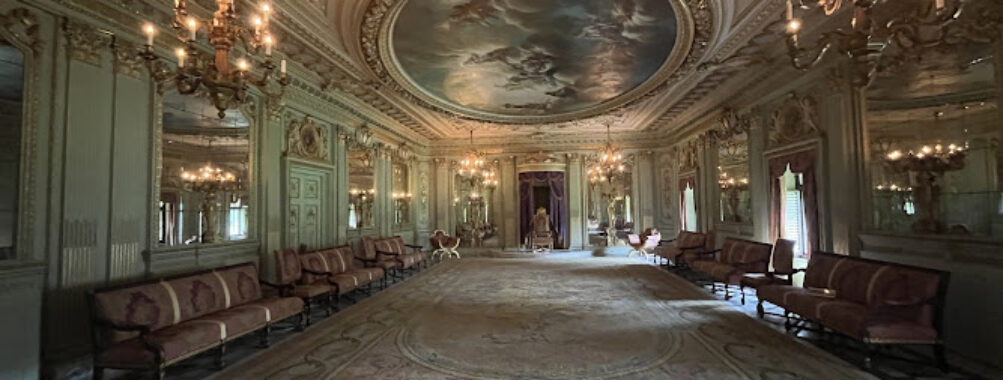
Lal Bagh Palace
“`html
Table of Contents
Description
Lal Bagh Palace in Indore is one of those places that quietly takes your breath away. Built by the Holkar dynasty in the late 19th century, it’s a grand reminder of an era when royalty had a flair for the dramatic. The palace’s architecture is a fascinating mix of baroque, rococo, and neoclassical styles—each corner seems to whisper stories of elegance and power. You walk through its massive gates and suddenly feel like you’ve stepped into another century. The marble floors, the ornate ceilings, and that unmistakable European influence—it’s all there, beautifully preserved yet tinged with the passage of time.
Now, I’ve been to quite a few palaces across India, but Lal Bagh Palace stands out for its understated charm. It doesn’t scream royalty; it hums it. There’s something deeply personal about the space, as if the Holkars left behind not just their furniture and portraits, but also fragments of their lives. The ballroom, with its Belgian glass chandeliers and grand mirrors, still feels ready for a royal waltz. And honestly, if you close your eyes for a moment, you can almost hear the faint echo of music and laughter from a bygone evening.
But it’s not all opulence—some parts of the palace show their age, and that’s part of its allure. The slightly faded walls and the creaking wooden doors remind you that history isn’t meant to be perfect; it’s meant to be real. That’s what makes Lal Bagh Palace feel alive, even after more than a century.
Key Features
- Lavish 19th-century architecture blending baroque, rococo, and neoclassical influences.
- Richly decorated interiors featuring Italian marble, intricate carvings, and gold-plated ornaments.
- Elegant ballroom with Belgian glass chandeliers and ornate mirrors—a highlight for photographers.
- Exhibits showcasing the lifestyle, art, and legacy of the Holkar dynasty.
- Expansive gardens surrounding the palace, offering peaceful walks and photo-perfect views.
- Wheelchair-accessible entrance, restrooms, and parking facilities, making it inclusive for all visitors.
- Family-friendly environment with open spaces suitable for children to explore safely.
One of my favorite things about Lal Bagh Palace is how it manages to be both grand and approachable. You don’t need to be a history buff to appreciate it—just someone who enjoys a good story told through architecture. And if you’re into photography, well, bring extra memory cards. The play of light through the glass windows and the intricate details on the walls could keep you snapping for hours.
Best Time to Visit
If you ask me, the best time to visit Lal Bagh Palace is between October and February. The weather in Indore during these months is pleasantly cool, which makes wandering around the gardens and the palace interiors much more enjoyable. Summer can get a bit harsh, and trust me, you don’t want to be exploring marble halls under the blazing sun. Monsoons, though, have their own charm—the lush greenery around the palace looks fresh and alive, but you might need to dodge a few puddles.
Morning visits are ideal if you prefer quiet exploration. The palace tends to get busier later in the day, especially on weekends and holidays. There’s something magical about walking through those grand corridors in the soft morning light—it’s almost cinematic. And if you’re into photography, early light brings out the texture of the architecture beautifully.
How to Get There
Lal Bagh Palace is located in the heart of Indore, and reaching it is pretty straightforward. If you’re coming from the city center, it’s just a short drive away. Auto-rickshaws and taxis are easy to find, and ride-hailing apps work smoothly here. For those arriving from outside Indore, the palace is about a 20-minute drive from the railway station and around 25–30 minutes from the airport, depending on traffic (and yes, Indore traffic can surprise you sometimes).
Public buses also stop nearby, but honestly, if you want a comfortable trip, I’d recommend hiring a cab for the day. That way, you can explore other nearby attractions like Rajwada Palace or the Central Museum without worrying about transport. Parking is available near the palace, and accessibility is well thought out—ramps and wide pathways make it easier for wheelchair users and families with strollers.
Tips for Visiting
A few things I’ve learned from my visits—first, wear comfortable shoes. The palace grounds are vast, and you’ll be walking quite a bit. Also, photography is usually allowed in most areas, but it’s always good to double-check at the entrance. Some sections might have restrictions, especially where delicate artifacts are displayed.
If you’re traveling with kids, they’ll love the open garden spaces. It’s a safe, calm environment for them to explore while you soak in the history. And for those interested in architecture or interior design, take your time—every corner has a detail worth noticing. The marble staircases, the European-style furniture, even the door handles have stories to tell.
I’d also suggest visiting on a weekday if possible. Weekends can get crowded, and you might lose that quiet charm that makes the palace special. Bring a bottle of water, as there’s no restaurant inside, though you’ll find plenty of eateries nearby once you’re done exploring. And don’t rush—Lal Bagh Palace deserves a slow, thoughtful visit. Sit for a while in the garden, let the breeze carry the scent of old trees, and imagine the grandeur that once filled these halls.
For travelers who love history, architecture, or simply beautiful places that tell stories, Lal Bagh Palace is a must-see. It’s not just a museum—it’s a time capsule. A place where art, culture, and history meet under one ornate roof. And even if you walk away with a few dusty shoes and slightly tired legs, you’ll carry something far more valuable: a glimpse into the soul of Indore’s royal past.
“`
Location
Places to Stay Near Lal Bagh Palace
Find and Book a Tour
Explore More Travel Guides
No reviews found! Be the first to review!